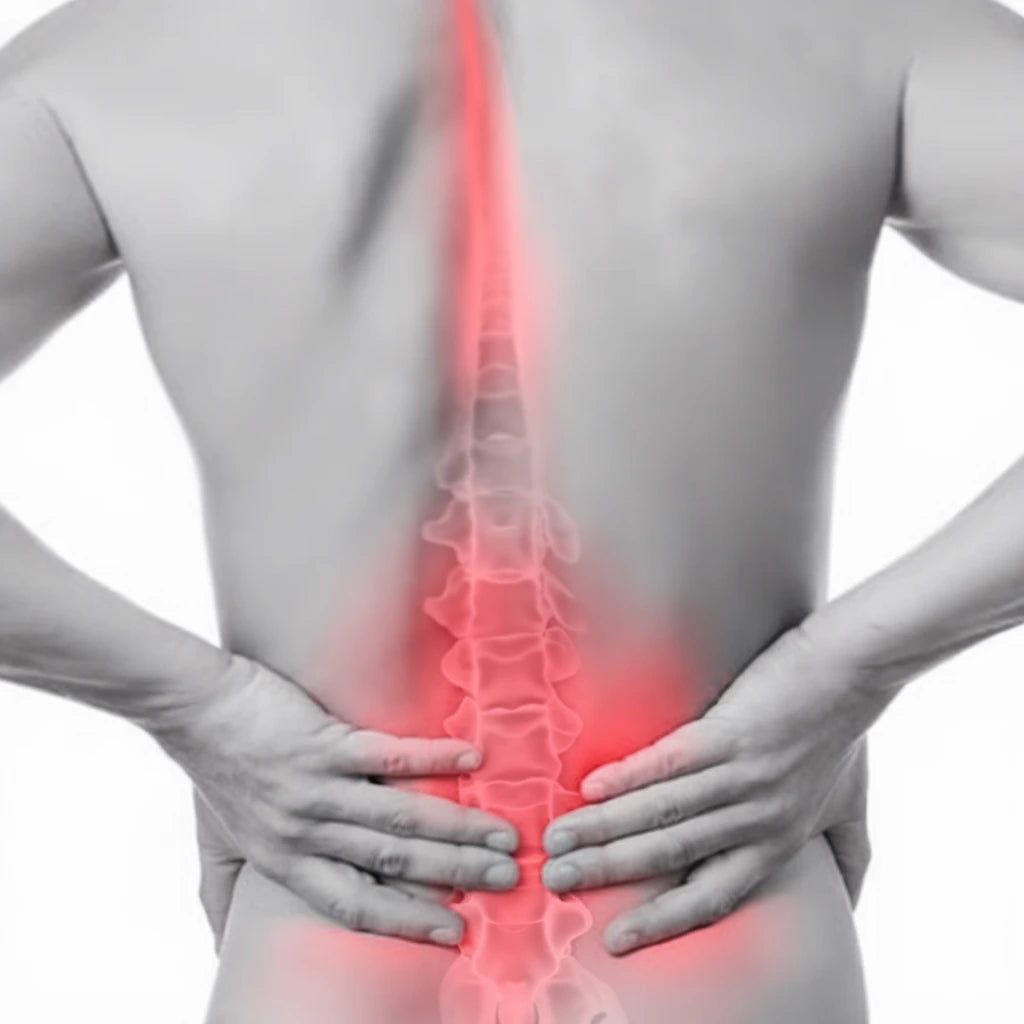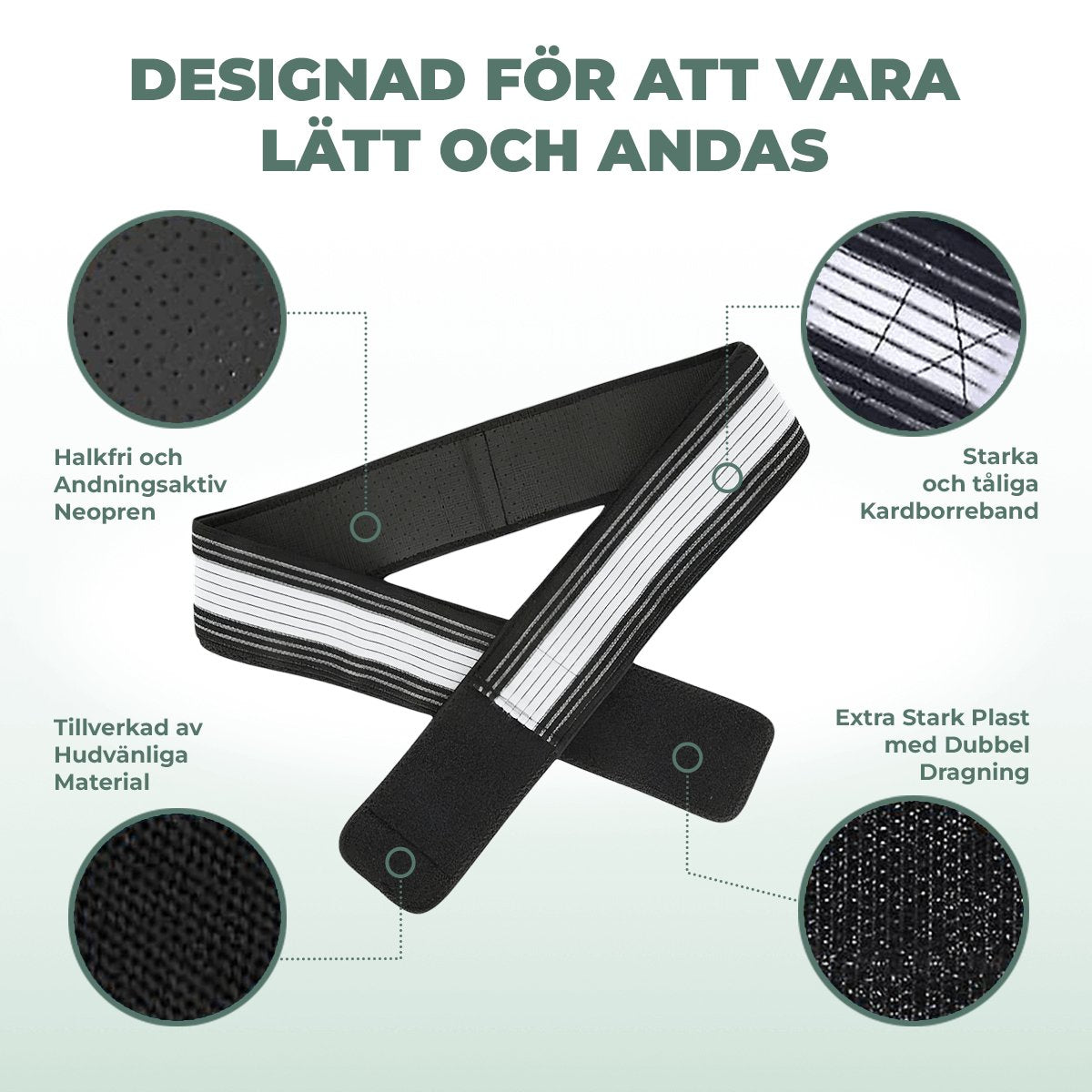Herniated Disc in the Back: Symptoms, Causes, and Treatment

A herniated disc is a common cause of back pain that occurs when a disc between the vertebrae becomes damaged and bulges out. Here's an overview of the symptoms, causes, and treatment options for a herniated disc.
What is a herniated disc in the back?
A herniated disc in the back occurs when a jelly-like disc bulges out of place and presses on nerves. This can cause back pain, sciatica, numbness and sometimes weakness in the legs. The condition is often treated with rest, physical therapy and exercises, while surgery may be considered in severe cases. A herniated disc in the back is often felt as an intense pain that can radiate from the affected area, and the symptoms can range from mild to severe depending on how much of the nerve root is compressed.
Symptoms and signs of a herniated disc in the lumbar spine: Pain, sciatica and back pain
Common symptoms include:
- Lower back pain
- Pain that radiates down a leg (sciatica)
- Numbness and tingling in the legs
- Weakness in the legs or feet
- Difficulty controlling leg movements
What does a herniated disc in the back feel like? Symptoms vary depending on the location of the herniated disc and which nerve is affected. Many people experience intense pain that can radiate down the leg, especially when the herniated disc is in the lumbar spine. Some also feel muscle weakness or reduced mobility in the affected part of the body. Similar symptoms also occur with nerve pain in the back .
Causes of herniated discs in the lumbar spine: Why do you get a herniated disc and what hurts?
Herniated discs can be caused by:
- Gradual wear due to age
- Overloading or improper loading of the back
- Sudden movements or lifting
Back pain from a herniated disc occurs when the disc bulges out and presses on a nerve root. This can happen suddenly during a back injury or develop gradually over time. Discs in the lumbar spine are particularly vulnerable because this part of the back is exposed to a lot of strain in everyday life. When the nerve gets pinched, it can cause pain in both the back and radiate down the leg, sometimes all the way to the foot. Similar overuse problems can occur with a stiff back .
Diagnosis and treatment of lumbar disc herniation: Preventive measures, disc herniation exercises and emergency interventions
Diagnosis and treatment of lumbar disc herniation
A herniated disc in the lumbar spine occurs when one of the discs between the vertebrae presses on a nerve root in the lower back. This can cause pain, numbness, or weakness that radiates down the legs. A proper diagnosis and customized treatment plan are essential to reducing discomfort and regaining normal mobility.
Rest and pain relief
For herniated discs, treatment often begins with rest and pain relief. By reducing the load on the back, the tissues are given time to recover. Anti-inflammatory drugs can be used to relieve pain and reduce inflammation. A stable back support such as RyggKomforten™ can help keep your back in the correct position during recovery.
Physiotherapy
Once the pain begins to subside, physiotherapy is an important part of rehabilitation. The goal is to strengthen the back muscles and improve posture, which reduces the risk of new problems. Regular exercises help stabilize the spine and provide better support for the discs.
Cortisone injections
In some cases, cortisone injections are used to quickly reduce inflammation and relieve pain. This may be an option for more severe symptoms, but the treatment should be seen as temporary as it does not solve the root cause of the problem.
Operation
If conservative treatment methods are not effective enough, surgery may be necessary. During surgery, the part of the disc that is pressing on the nerve is removed or reduced. The procedure aims to reduce pain and restore nerve function, but is only used when other treatment options are not enough.

How BackComfort™ can help: Treat herniated discs and relieve lower back pain
BackComfort™ offers several benefits for people with herniated discs in the back:
- Provides support and stability to the spine
- Improves posture and reduces strain on the discs
- Can relieve pain and discomfort during daily activities
- Helps prevent further damage
For many with herniated discs in the back, BackComfort™ can also help reduce the need for surgery by relieving the strain on the back and providing support when you need it most. The product is designed not to impair the muscles' own function, but works as a complement to exercises and other treatment recommended by your healthcare provider. You can also combine its use with heat therapy for stiff backs for additional relief.
Buy nowConclusion: Healing and preventing herniated discs – Read more about how you can manage your symptoms
A herniated disc in the back can be painful and limiting, but with the right treatment and support, most people can recover well. By combining conservative treatment methods with the use of supportive aids such as the BackComfort™, many can effectively manage their symptoms and improve their quality of life.
Herniated discs in the back surgery is rarely necessary, as most herniated discs heal with time and proper treatment. It is important to be patient and understand that the healing process can take time. Maintaining good posture, using proper lifting techniques, and strengthening your back muscles are important to prevent further problems with herniated discs in the future. Related risk factors may also be present in low back pain .
Frequently Asked Questions (FAQ)
How long does a herniated disc in the back last?
Most herniated discs heal within 6-8 weeks, but in some cases, symptoms may persist for several months.
Can I exercise with a herniated disc in my back?
Light exercise and specific exercises are often recommended as part of treatment. Consult a physical therapist for a customized exercise program.
How quickly can I expect results with BackComfort™?
Many people experience immediate relief, but full effect may take a few weeks of regular use.
Is surgery always necessary for a herniated disc in the back?
No, most herniated discs can be treated without surgery. Surgery is only considered in severe cases where conservative treatment has not been successful.
Can Back Comfort™ prevent herniated discs?
While BackComfort™ cannot guarantee that herniated discs will be prevented, it can help improve posture and reduce strain on the back, which can also reduce the risk of nerve pain in the lower back .

